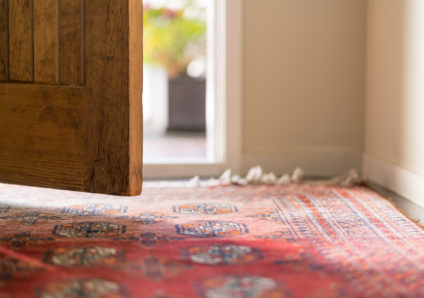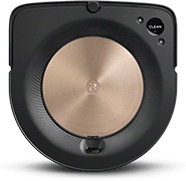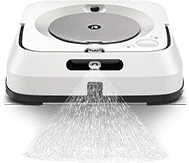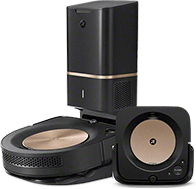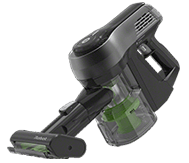DIY Oriental Rug Cleaning – Without the Cost of a Professional Clean
Oriental rugs are notoriously expensive and fragile, which means you’re likely wondering how to clean those heirloom pieces… or the ones you bought yourself (that will soon become heirlooms).
Look, any type of rug is expensive, but you definitely don’t want to ruin an Oriental rug. Most of the time you’d trust a professional rug cleaning service for that reason. But, that’s pretty expensive too, and you’ve already spent a lot on the rug itself.
Thankfully, there are options when it comes to Oriental rug cleaning. You don’t have to throw money away for the small stuff (and even some of the hard stuff).
There is something to learn from the professional rug cleaners though. So we’ll start there.
Here’s what the professional rug cleaning process looks like
There’s no magic Oriental rug cleaning machine that professionals simply feed your rugs through, and voila, sparkling clean.
It’s quite an intensive process of suds-ing, agitating, watering, rinsing, and drying that breathes life back into your rugs.
While most professional oriental rug cleaners do have their own processes and machines, these are the steps they generally follow:
- Place your rug over a set of raised, meshed rubber mats, and drench your rugs in water and a soapy mixture (their own secret recipes). They may leave your mat to soak for a while, depending on the rug, in order to loosen the dirt and buildup that’s deeply set in.
- Agitate the rug by running an agitator brush/ machine over its surface. This is meant to get deeply into the fibers of the rug to loosen grime without damaging its color or texture.
- Use a squeegee or flat rake to push/ pull all of the soapy, dingy water from your rug.
- Rinse and soak your rug once again to remove any residual soap and dirt. They usually do this at somewhat of an angle to push both off the rug.
- Run the flat rake over the rug again for a second cleanse and remove excess soap and dirty water. They’ll likely repeat until there’s no more dirt or soap coming off of your rug.
- This doesn’t happen at all professional silk rug cleaning services, but some may use a type of suction vacuum meant only to pull up water from your rug for faster drying. Other shops may hang your rugs in a drying room with limited humidity and excessive heat (much like a dry sauna).
Now, while this is generally the process, Oriental rugs are rather delicate. Having your rugs cleaned, even by a professional area rug cleaning company, shouldn’t be something you rely on all the time unless you find a rug cleaner in your area that’s more familiar with the filtering process.
The rug filtering process is specifically designed for Oriental and Persian rugs, which pumps an acid-based cleaner with water over your rug.
The liquid will filter through, and the cleaners will repeat this step several more times until the filtered liquid comes out clean. They’ll then soak it again with clean water before drying your rug.
While it’s pretty difficult to replicate this process at home, this was still a good look at how intensive the cleaning process is when your rugs are truly dirty.
Want to clean your home like a pro? Here’s how:
A House Cleaning Checklist for Each Room, by Day, Week, and Month
How much do Oriental rug cleaning services cost?
The cost of Oriental carpet cleaning services will depend on a few factors:
- Where the rug cleaning facility’s service area is
- How big the rug is
- How dirty the rug is (if it needs pet urine odor removal, it may cost more)
That said, depending on cleaning needs, we’ve seen prices as low as $.49 per square foot and as high as $8 per square foot.
 Can you dry clean Oriental rugs?
Can you dry clean Oriental rugs?
This greatly depends on your rug. Even Oriental rugs may have details within the rug that are of a different material, or a color that’s difficult to clean without damaging with typical water-based detergents used by rug cleaners.
So a particularly good rug cleaner will be able to spot these details and opt to dry clean your rug automatically.
Rugs that aren’t incredibly dirty can also be dry cleaned (also known as solid cleaning or dry soil removal).
The reason this only works for slightly soiled rugs, is that dry cleaning methods cannot remove all or more deeply ingrained messes than washing with water and detergent would.
That doesn’t exactly mean you can send your rug to any dry cleaner. Generally they either won’t accept your rug or they’ll send it to a rug cleaning subcontractor.
Your best option is to bring the rug to a professional cleaner and opt for dry cleaning from their service. You may also choose to dry clean your rug at home – we’ll get into that later.
Can I clean my Oriental rug myself?
While most of us uphold the belief that Oriental rugs are too delicate to clean at home, it is possible to spot clean or lightly clean Oriental rugs yourself. However, you should always follow the manufacturer’s recommendations for your specific rug.
There is a caveat to this.
The reason Oriental rugs are so beautiful, and also so fragile, is because they’re often colored with vegetable dye. This is why the colors on Oriental rugs tend to bleed when you clean them too vigorously, with the wrong detergents, or with improper cleaning methods.
So, looking at the steps professional rug cleaners take and trying to replicate that just won’t work. In fact, even the professionals can improperly handle your rugs can cause them to bleed if they’re too aggressive.
If you do clean your rugs yourself, make sure to avoid:
- Any bristled carpet cleaning machine
- Alkaline-based detergents, which will release the color
- General household soaps
- Hot or warm water, which would “ignite” the dyes and cause them to bleed
Ready to clean all your area rugs DIY-style? Here’s how:
Is Persian or Oriental rug cleaning difficult?
If you’re trying to replicate the professional method of scrubbing with a certain type of machine, a brush, and detergent, it’ll be a bit difficult without a bit of damage.
The filtering method for cleaning a rug isn’t necessarily easy either, as you’ll have to have the proper area/ method for soaking and filtering the right fluids.
BUT, don’t fret, there are still plenty of ways to clean your Oriental rugs at home without damaging them.
Is DIY area rug cleaning worth it?
Rugs are pretty expensive, and so is having them professionally cleaned. They’re incredibly beautiful in your home, though, and the difference between a clean rug and dingy one can be quite dramatic.
So, yes, it’s worth it to clean your rugs yourself if you can clean them properly.
How to clean an Oriental rug yourself
Hand washing and rinsing an antique rug yourself is not for the faint of heart.
But this statement holds true for cleaning Oriental rugs, whether done by a professional or by yourself at home:
If you want to properly clean your rugs and help them last, you have to clean through the fiber with cold water and an acid cleaning product.
Now, that is for more of a deep clean. A spot clean, or monthly cleaning doesn’t need to be quite as thorough.
For every day dirt and dust, you can simply shake your rugs outside, and even “beat” them with a rug paddle (or really anything with a large flat surface).
For a deeper clean at home, follow these steps:
- Bring your rug outside (best to do this on a warm, but not humid, day), where you’ll be able to use a lot of water and cleaner thoroughly without a mess inside. If you have a deck, that’s a great place to lay your rug while cleaning, as it’ll allow the water to drain through the fibers.
- Vacuum your Oriental rug. NOTE: Please check the care instructions on your rug’s label. Typical care tags recommend suction only, because Oriental rugs often have longer threads of fringe that can get caught in a brush. A vacuum with rubber scrubbers or beater bar is preferred over bristles, to avoid frays – IF your threads are not too long. But again, please check your care tag.
- Mix water with an acidic cleaner that’s approximately 5.5 ph. (Stay away from alkaline cleaners when it comes to silk and wool fibers.) White vinegar is a great option for this.
- Pour the water over your rug until it’s fairly well soaked.
- With a brush – with long, soft bristles rather than short agitating bristles – stroke (don’t scrub) your rug in one direction.
- The direction you should go in, is typically “with the grain.” If your rug was handmade, you can tell this by looking at how your rug was knotted. The fibers will almost always point in one direction.
- Pour fresh, clean water over your rug and swipe your brush over it gently one more time.
- Your rug will likely be very heavy to pick up at this point. You can push out a lot of the water with a squeegee or flat rake, or simply hang your Oriental rug to let it dry in a warm, but not humid area.
If you live in an area that doesn’t get very hot, or is too humid, you can bring your rug inside to lay over a laundry stand, wire, or over a curtain rod fashioned in a dry room. You can also place a fan (and a dehumidifier if you have one) in the room for additional drying action.
Is it safe to steam clean Oriental rugs?
No, not really, for the same reason you shouldn’t use hot water on an Oriental rug. Remember, most Oriental rugs are colored with vegetable dye. These colors easily run, especially with hot water (like tea).
So no, steam cleaning Oriental rugs at home (or otherwise) isn’t recommended by most professional cleaners.
Can you use a carpet cleaner on an Oriental rug?
Yes, you can. But you shouldn’t trust just any carpet cleaner. It’s very easy to damage the fibers of an Oriental rug with the wrong cleaner.
The wrong cleaner is anything that’s alkaline based. With a wool or silk rug, you want to turn to the other end of the spectrum, to a cleaner that’s acidic.
It sounds a little counterintuitive to what most of us would think about cleaning. Acidic equals bad, right? As least it definitely is when it comes to cleaning tile and grout.
But with a silk or wool rug, an acid that’s approximately a 5.5 ph is ideal.
Done sweeping the chore of tile floors under the rug?
Does baking soda get stains out of rugs?
There’s a lot of trust put into the cleaning power of baking soda, and truly it’s a great cleaner for things like pots and pans and some household areas (like in your oven).
One of the reasons it’s such a great cleaner is because it’s abrasive. We often mix it with vinegar, which is a nice acidic cleaner that can cut down a lot of smells.
But abrasive is not what you want to go for when cleaning an Oriental rug. Since baking soda is neutral, it also won’t have much cleaning power when it comes to stain removal and is more likely to leave a residue and damage those silk or wool rug fibers over time.
In most cases, there’ll be some kind of scrubbing if you’re using baking soda. Try to avoid scrubbing Oriental rugs, even for stains, as it’s more likely to pull the color out of your rug and fray the fibers.
Spot cleaning an Oriental rug (never rub)
Just like with deep cleaning these beautiful rugs, your best weapon is water and an acid based cleaning solution.
Yes, even to spot clean, you should use that same combination. Only this time, we don’t expect you to soak your entire rug.

- With a wet/dry vacuum (of any size), add your acidic cleaner to cold water.
- Spray the area you’re trying to spot clean (most wet/ dry vacuums have a sprayer attached)
- Let the cleaner soak into the rug for 10-20 minutes to loosen up the soil and stain.
- Run the suction head over the wet, stained area in a consistent motion. Remember not to scrub the area, and it’s best if you can go with the “grain” if you can tell which direction that’s in (usually only possible if it was hand woven).
- Let the area air dry, though you could also use a fan if you’ve had to clean several areas or a large section of your rug.
For really set in stains, you may want to use a soft bristled brush to very gently swipe (in one direction) over the stain to agitate whatever’s set in.
Getting the smell out of an Oriental rug
Have you ever accidentally washed a wool pillow or sweater? Oh gosh, if you haven’t, don’t try it (100% would not recommend). Not only does it get incredibly heavy and seem absolutely impossible to bring back to life, it smells.
Most Oriental rugs are made of wool, and they can really hold onto smells (like a wet dog).
Most of us might break out an enzyme cleaner for that (especially if it’s from pet odor), but enzyme cleaners will only cause rug bleeding and will not remove the smells from an Oriental rug because those urine crystals are buried deep into the fibers of the rug.
Looking to get pet hair out of your rug too? Check out our blog
So most lingering smells are actually because you’re not getting deep enough into the rug with any method of surface cleaning.
The best way to get the smell out of a rug (without using a deodorizer), is to clean through the fibers rather than trying to lift the smell out with cleaners.
The steps in the “how to clean an Oriental rug yourself” section lay out how to do this without leaving odors behind.
But maybe you don’t want to clean your entire rug, and it’s just a small stain from a beloved pet (or child… or you…).
In that case, follow these steps:
- Bring your rug out to a clean surface that you can possibly drain, such as the deck.
- You still want to douse your rug in a mixture of cold water and an acidic cleaner, though you can also add vinegar.
- While you can lightly brush the area, it’s not really needed unless there’s a stain. Simply running this acid based cleaner through the fibers again and again should do the trick.
- To quickly remove much of the excess moisture use a wet/dry vacuum to suction up as much as you can.
- Hang the rug until it’s completely dry.
Drying your Oriental rug (hanging it isn’t enough)
Most professional rug cleaners have their own methods of drying rugs, ranging from:
- A flat rake or squeegee to push much of the liquid off before a secondary method
- A professional grade suction vacuum (without any bristles at all) to suck up the water
- A high-speed spinner to throw the water from the run with centrifugal force
- Hanging the rug in a drying room
- Hanging the rug over a dryer, that shoots air directly at the rug
- A series of high-heat fans
Now, clearly you’re not going to have access to much of this at home. In fact, the only two that really seem at all viable are the squeegee or flat rake and a wet/dry vacuum.
Those are, in fact your best bets for extracting much of the water from your rugs before you hang them (because often hanging them straight after a wash leaves them too drenched).
 What happens if your rug doesn’t dry well (and fast)?
What happens if your rug doesn’t dry well (and fast)?
Just like any of your clothes (or pool equipment), long standing water isn’t a friend. Think mold and mildew, and at the very least, brittle fibers and a heck of a smell that seems impossible to get rid of.
Besides that, on an Oriental rug, long standing water can cause colors to bleed.
If you’ve stored it in a storage unit or basement, you may go a long period without realizing it’s gaining that smell. For that, you’ll have to give it a deep clean yourself or send it off to be thoroughly cleaned by a professional.
If you’ve simply dropped water on your rug, your best bet is to soak up as much as you can with towels or a wet/ dry vacuum and hang it up to dry.
Vacuuming an Oriental rug
Most rugs, not even Oriental rugs, trap dirt from your daily walk throughs. Generally, you can get away with shaking it off over the balcony or in the yard.
But if you’re looking to get a deeper clean- like, with a vacuum- not to worry. You can absolutely vacuum your rug occasionally.
Note though, that over time and with too frequent of vacuums, some of the fibers may loosen or fray. Vacuuming once every two weeks is a safe enough frequency for Oriental rugs.
Maintaining your Oriental rugs (like your life savings depends on it)
Some people like to hang onto their rugs for generations, and it’s no wonder why. It’s not because they’re expensive (though that is a factor), but because they’re handwoven items from various cultures around the world. Not to mention they’re incredibly beautiful.
The only way to hand them down though, is to maintain them properly.
To do that, you need to remember 3 factors.
- Vacuum your rugs
- Rotate them or move them to different areas of your home
- Spot clean your rugs
While you don’t want to over-vacuum an Oriental rug, they still need a good clean every now and then. Vacuuming them can keep them looking newer for longer, and keep stains from setting in too deeply.
Rotating or moving your rugs help to keep them from getting too worn in one particular spot. If your rug is in a high traffic area, it’s constantly trampled on, which will wear it down over time.
It’s great to see them, but the rug might need a foot traffic break every once in a while.
Spot cleaning also helps to keep your rugs looking newer for longer, and simply ensures stains don’t become permanent.
How often should Oriental rugs be cleaned?
Rugs don’t need tons of scrubbing and cleaning. That’s one great thing about them. But they do need a good shake, vacuum, and deep cleaning once in a while.
For vacuuming: every 2 weeks is ideal.
For spot cleaning: as needed, generally right after a spill or stain happens.
Deep cleaning: once a year in great weather.
Oriental rugs can last for generations, adding that bit of beauty and color to your home (and your children’s… and theirs). Keep them clean with acid based cleaners, occasional vacuuming, and a deep clean once a year.

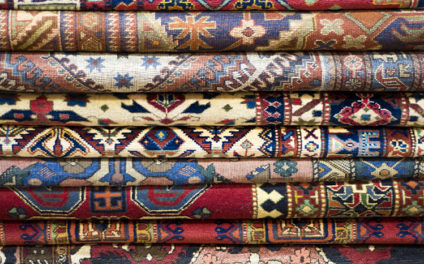
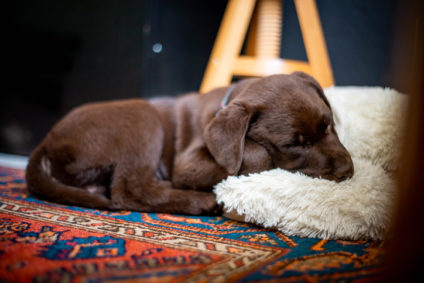 Can you dry clean Oriental rugs?
Can you dry clean Oriental rugs?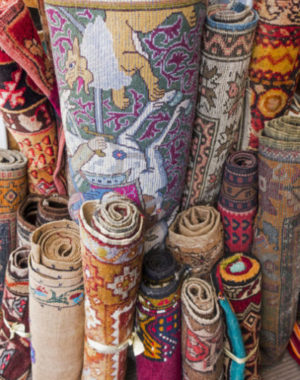

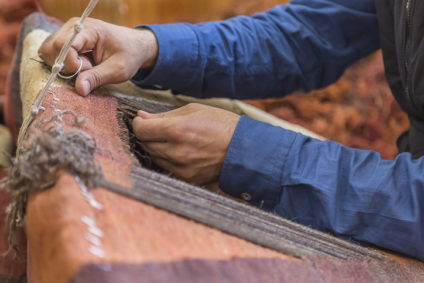

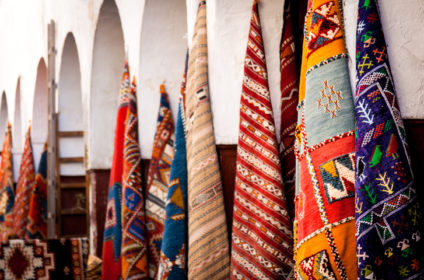 What happens if your rug doesn’t dry well (and fast)?
What happens if your rug doesn’t dry well (and fast)?